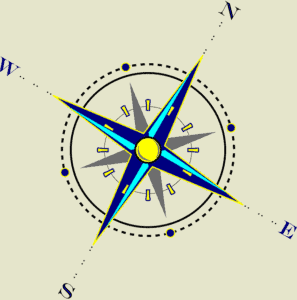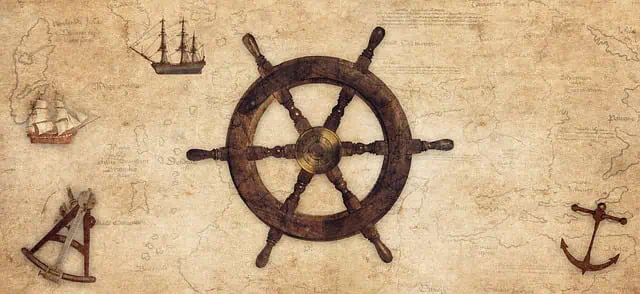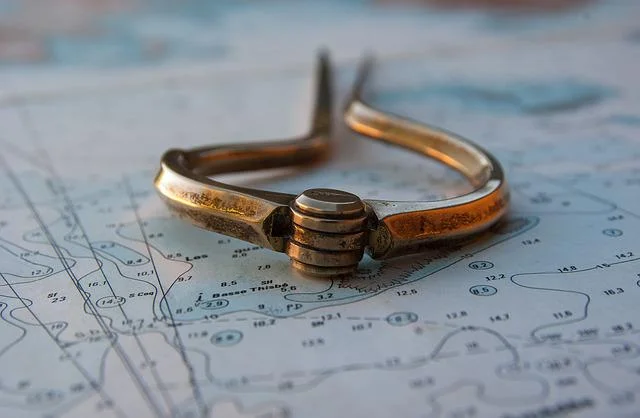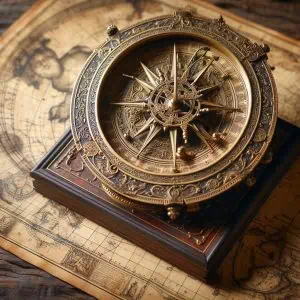The magnetic compass was a transformative medieval invention that revolutionized navigation during the Middle Ages. Adopted in Europe from earlier Chinese innovation, the compass allowed sailors to navigate more accurately, even in poor visibility. It played a critical role in maritime trade, exploration, and the expansion of European influence. The medieval compass represents a key step toward the Age of Exploration, enabling more confident travel across open seas.

Although some rudimentary types of the compass existed in China and probably Mesoamerica before the medieval period, it was in medieval Europe that the earliest versions of the modern compass as we know it was invented.
Compass in medieval Europe came to be simply a result of the need for navigators, sailors, and merchants to safely traverse the waters of the Mediterranean.
History of the Floating Compass
Although it is not known exactly when the compass was invented in Western Europe, the earliest textual mentions of a compass date back to the late 12th century. By the late 13th century, different authors were penning down detailed descriptions of a floating compass.

What is historically certain is that by the second half of the 13th century, the floating compass had become a widely used instrument among the sailors and navigators. A floating compass was very effective in telling the navigational directions but it had to be used inside a bowl of water and so, this type of compass was rather unstable on board a ship.
History of Dry Mariner’s Compass
The earliest type of compass that became prevalent in medieval Europe was a floating compass. The floating compass, as the name suggests, comprises of a magnetic pointer floating in water. By the end of the 13th century, a dry mariner’s compass had been invented.
It was this compass which became more popular among the merchant and military ships of the 14th century.

Design of Dry Mariner’s Compass
The dry mariner’s compass comprised of a compass card on which were noted the four cardinal directions. The compass card served as the base upon which a pivoting needle was affixed. This whole setup was then enclosed in a glass cover to make it secure.

Although the concept of a dry compass existed in Europe before the 14th century, it was only in 1302 that Italian pilot Flavio Gioja perfected the notion and created the first prototype of the modern compass.
Impact of Compass on Medieval Europe
The invention of the floating and dry mariner’s compass in Western Europe came about at a time when sea activity was increasing. Naval warfare was beginning to be a regular part of wars and merchant cities all along the Mediterranean were extensively using merchant vessels to traverse the seas.

Both of these factors created a need for a more accurate way of navigation, especially a method of navigating through the seas during winters when visibility was low. The invention of the compass, in part, finally extended the yearly navigation period.

Before the use of the compass, ships in the Mediterranean typically ceased activity between October and April. Once compass and other navigational advancements took place, shipping movements would begin in late January and continue until December. This had a very significant effect on the trade of wealthy merchant cities and states like Venice.
What is the origin of the magnetic compass in Europe?
The compass was introduced to Europe around the 12th–13th century, adapted from earlier Chinese inventions.
Why was the compass important in medieval navigation?
It allowed ships to maintain direction even when landmarks or stars weren’t visible, revolutionizing long-distance travel.
Who used the compass during the Middle Ages?
Sailors, traders, and explorers across Europe relied on it for accurate maritime navigation.
How did the compass impact medieval trade and exploration?
It enabled safer sea travel, expanding trade routes and exploration during the later medieval period.
Learn about Medieval Inventions and Technology at Wikipedia






